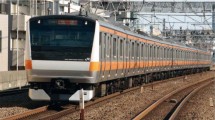This study aims to establish the weld quality of the Nd:YAG laser-MIG hybrid welding on galvanized steel (SGACC60). In order to do so, the Taguchi analysis optimized the laser-arc hybrid welding process for SGACC60 by varying four parameters: welding speed, welding current, laser-arc distance and shielding gas. The experiment produced 18 combinations of these four essential welding parameters, which were estimated in terms of ultimate tensile strength, welding depth and width ratio, and hardness. The optimum result exhibited that the tensile strength of welds was approximately 101% of that of the base metal, and that their hardness was within the acceptable range (the maximum value 350 Hv).



Similar content being viewed by others
References
Q. A. Wu, J. K. Gong, G. Y. Chen, and L. Y. Xu, “Research on laser welding of vehicle body,” Opt. Laser Technol., 40, 420–426 (2008).
E. Beyer, U. Dilthey, R. Imhoff, et al., “New aspects in laser welding with an increased efficiency,” in: Proc. of ICALEO’94, Orlando, FL (1994), pp. 183–192.
S.-M. Joo, H.-S. Bang, and S.-Y. Kwak, “Optimization of hybrid CO2 laser-GMA welding parameters on dissimilar materials AH32/STS304L using Grey-based Taguchi analysis,” Int. J. Prec. Eng. Manuf., 15, 447–454 (2014).
C. Fuhrmann, D. Petring, and R. Poprawe, “Recent results on high power CO2 and Nd:YAG laser-arc welding of thick steel plates,” in: Proc. of the 3rd Int. WLT Conf. on Lasers in Manufacturing (2005), pp. 185–192.
M. Katsuna and L. Chen, “Interaction of both plasmas in CO2 laser-MAG hybrid welding of carbon steel,” in: Proc. of SPIE (2003), Vol. 4831, pp. 341–346.
S. Katayama, Y. Naito, S. Uchium, and M. Mizutani, “Penetration and porosity prevention mechanism in laser-arc hybrid welding,” in: Proc. of the 3rd Int. WLT Conf. on Lasers in Manufacturing (2005), pp. 193–198.
M. El Rayes, C. Walz, and G. Sepold, “The influence of various hybrid welding parameters on bead geometry,” Suppl. Weld. J., 147-S–153-S (2004).
S. Herbert, “Laser-hybrid welding of ships,” Weld. J., 83, No. 6, 39–44 (2004).
L. K. Pan, C. C. Wang, S. S. Wei, and H. F. Sher, “Optimizing multiple quality characteristics via Taguchi method-based Grey analysis,” J. Mater. Process. Technol., 182, No. 1, 107–116 (2007).
Saurav Datta, Asish Bandyopadhyay, and Pradip Kumar Pal, “Grey-based Taguchi method for optimization of bead geometry in submerged arc bead-on-plate welding,” Int. J. Adv. Manuf. Technol., 39, 1136–1143 (2008).
Metals Handbook – Ninth Edition (Vol. 8 – Mechanical Testing), ASM Handbook Committee (1985).
S. Maghsoodloo, G. Ozdemir, V. Jordan, and C.-H. Huang, “Strengths and limitations of Taguchi’s contributions to quality, manufacturing, and process engineering,” J. Manuf. Syst., 23, No. 2, 73–126 (2004).
Amit Kumar Sinha, Duck Young Kim, Darek Ceglarek, “Correlation analysis of the variation of weld seam and tensile strength in laser welding of galvanized steel,” Opt. Lasers Eng., 51, 1143–1152 (2013).
M. Khan, L. Romoli, M. Fiaschi, et al., “Experimental design approach to the process parameter optimization for laser welding of martensitic stainless steels in a constrained overlap configuration,” Opt. Laser Technol., 43, 158–172 (2011).
D. Havrilla, “Photonics applied: materials processing-successful laser welding demands optimized laser joint design,” Laser Focus World, 48, 43–48 (2012).
D. Havrilla, “Photonics applied: materials processing-successful laser welding demands optimized laser joint design,” Laser Focus World, 48, 43–48 (2012).
D. X. Yang, X. Y. Li, D. Y. He, et al., “Optimization of weld bead geometry in laser welding with filler wire process using Taguchi’s approach,” Opt. Laser Technol., 44, 2020–2025 (2012).
Acknowledgments
This study was supported by the research fund from Chosun University (2013).
Author information
Authors and Affiliations
Corresponding author
Additional information
Translated from Problemy Prochnosti, No. 1, pp. 166 – 172, January – February, 2016.
Rights and permissions
About this article
Cite this article
Bang, H., Bang, H., Na, M.J. et al. Application of Taguchi Approach to Optimize Laser-Arc Hybrid Welding Parameters of Galvanized Steel. Strength Mater 48, 146–151 (2016). https://doi.org/10.1007/s11223-016-9749-0
Received:
Published:
Issue Date:
DOI: https://doi.org/10.1007/s11223-016-9749-0




